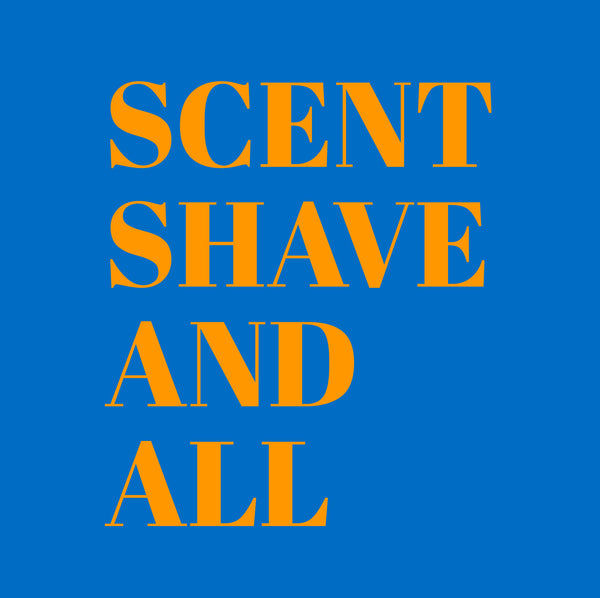
The Evolution of Shaving: A Journey Through History
Share
Shaving has come a long way since early humans first sought to groom themselves. From primitive tools made of stone to today’s precision-engineered razors and grooming gadgets, shaving reflects the evolution of technology, culture, and social ideals around personal care. This post delves into how shaving has transformed over the centuries, offering insight into the styles, tools, and trends that have shaped grooming practices.
1. Ancient Beginnings: The First Tools of Shaving
Shaving can be traced back to the Stone Age when early humans used tools crafted from flint, obsidian, or even seashells to remove facial hair. These early grooming practices were rough and rudimentary, often involving scraping at the hair rather than clean-cutting it.
In ancient Egypt, shaving gained cultural significance as smooth skin symbolised cleanliness and status. Egyptians developed copper razors around 3000 B.C. and used pumice stones for a smooth finish. For the ancient Greeks and Romans, shaving had both practical and symbolic purposes, often associated with military life to prevent enemies from grabbing beards in combat and later becoming a social norm for status and hygiene.
2. The Middle Ages: Barber Surgeons and the Rise of the Razor
During the Middle Ages, shaving became a craft managed by the barber-surgeons, who not only trimmed beards but also performed medical procedures like bloodletting and tooth extraction. Facial hair began to reflect more than mere grooming habits - it was a marker of class and profession. For instance, knights and soldiers were generally clean-shaven, while philosophers and scholars donned beards, symbolising wisdom.
Razor technology also took a leap during this era. By the late Middle Ages, razors were crafted from steel, which improved durability and sharpness, though they were still rudimentary compared to modern standards.
3. 18th and 19th Centuries: The Rise of Safety Razors
The 18th century saw significant advancements in shaving tools. Benjamin Huntsman, an Englishman, developed a process for producing high-quality steel in the mid-1700s, leading to more durable and sharper razors. Straight razors, or "cut-throat" razors, became the standard, but they required skill and were prone to injury if misused.
The real game-changer came in 1901 when King C. Gillette patented the safety razor. His invention, with its disposable, double-edged blade, made shaving safer and accessible to the average person. Gillette’s safety razor transformed the industry, marking the shift from barber-exclusive straight razors to at-home grooming. This also coincided with changing perceptions of masculinity, where the clean-shaven look became the hallmark of a modern, professional man.
4. The Mid-20th Century: Electric Razors and Mass Production
World War II played a crucial role in the rise of disposable razors and electric shavers. As soldiers required quick and reliable grooming methods, manufacturers designed razors that were portable, easy to use, and required minimal skill. This period saw the launch of the first practical electric razor by Jacob Schick in the 1930s, a groundbreaking invention that paved the way for modern electric shavers.
The convenience of electric razors appealed to men (and eventually women) worldwide, emphasising ease over ritual. Companies like Gillette, Remington, and Philips capitalised on this trend, offering a range of electric shavers that promised a quicker shave with less irritation.
5. The 1970s and Beyond: Disposable Razors, Cartridges, and Innovation
In the 1970s, disposable razors gained immense popularity, offering a low-cost, convenient option for grooming. Brands like Bic introduced single-use razors, which allowed users to discard the blade after a few uses, eliminating the need for sharpening or extensive maintenance.
The era also introduced multi-blade cartridge systems, starting with Gillette’s Trac II in 1971. This shift led to a new wave of innovation, with razors featuring two, three, and even five blades, as well as flexible heads, lubricating strips, and ergonomic handles. Marketing emphasised the comfort, closeness, and speed of these products, aligning with a fast-paced, convenience-focused culture.
6. 21st Century Shaving: Subscription Models and Sustainable Solutions
In recent years, the shaving industry has adapted to consumer preferences for convenience, sustainability, and cost-effectiveness. Companies like Dollar Shave Club and Harry's disrupted the market with subscription-based models, delivering razors and blades directly to consumers’ doors. These brands offered high-quality products at competitive prices, bypassing traditional retail and reshaping the shopping experience.
As environmental consciousness has grown, so has the interest in sustainable grooming options. Biodegradable razors, reusable safety razors, and even straight razors are making a comeback, reflecting a desire for eco-friendly alternatives that reduce plastic waste. Alongside sustainability, innovations in grooming now include skin-friendly technologies like precision trimmers, hypoallergenic coatings, and adaptive shaving sensors.
7. Beyond the Razor: Shaving Culture and Trends
In modern grooming culture, shaving has taken on a broader significance, extending beyond facial hair to include body hair grooming for men and women alike. Social media influencers, grooming tutorials, and professional barbershops have popularised a wide range of styles, from clean-shaven faces to meticulously styled beards. Tools now range from classic straight razors and electric trimmers to precision beard kits and skincare-infused shaving gels.
At the same time, there’s a growing movement embracing natural grooming styles. Many men are opting for beards as part of a broader trend that celebrates authenticity and individualism, while others enjoy the tradition and ritual of a close shave...
So, The Future of Shaving... What Could Be Next?
As technology continues to evolve, the future of shaving may bring further innovation, including AI-driven grooming tools, laser hair removal devices, and personalised skincare options. With a focus on sustainability and personalisation, shaving is likely to reflect both our technological advancements and the growing importance of conscious consumption.
From ancient stone tools to today’s high-tech gadgets, the journey of shaving shows how grooming practices adapt with the times. Whether one prefers a clean-shaven look or a stylish beard, the act of shaving is a timeless ritual that has, and always will, evolve with us!
